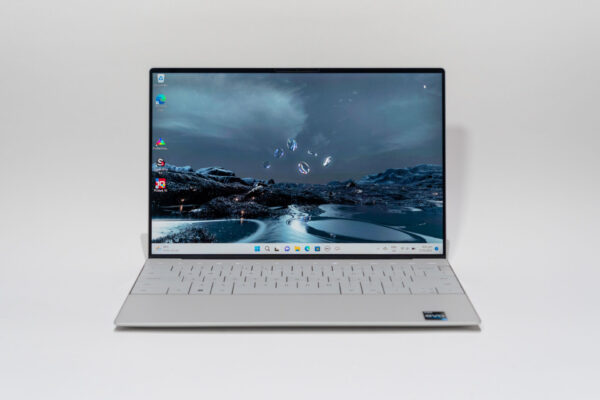
The Dell XPS 13 has a great reputation. It’s said to be the MacBook Pro of Wintel laptops. With the latest iteration, Dell has decided to get bolder with their design, stepping up their 2022 flagship a notch. This is the XPS 13 Plus.
There’s much to be excited about this new laptop. It is the first XPS 13 with a Plus suffix, so I think we have some high expectations. The first XPS 13 was released in 2012. By the XPS 13 9380 in 2019, the model had become so refined that there was little else left to complain. Yet, Dell found ways to make small changes in subsequent iterations. I suppose 2022 is the year that Dell decided to take the XPS 13 to the next level.
To the next level, they did. Whether everyone will like it, however, is a different matter. There are certainly some things about the Dell XPS 13 Plus that most people will agree are nicer. But there is at least one thing, or maybe two, that could be polarising. I will get to them.
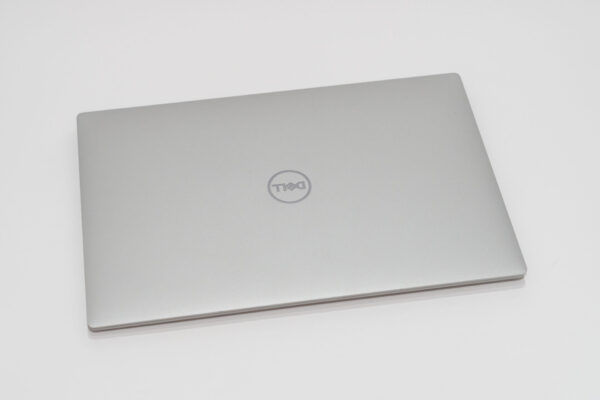
Overall, the XPS 13 Plus does retain the same look-and-feel. There aren’t much changes on the outside. With the lid closed, you will be hard pressed to tell the XPS 13 Plus apart from its predecessors. The CNC machined aluminum chassis looks gorgeous. The matt finish resists fingerprints. It’s light (1.23 kg) and compact (15.28 x 295.3 x 199.04 mm). It is in the same league as the latest M2 MacBook Air in terms of portability.
But open up the XPS 13 Plus, and behold the sight that greets you.
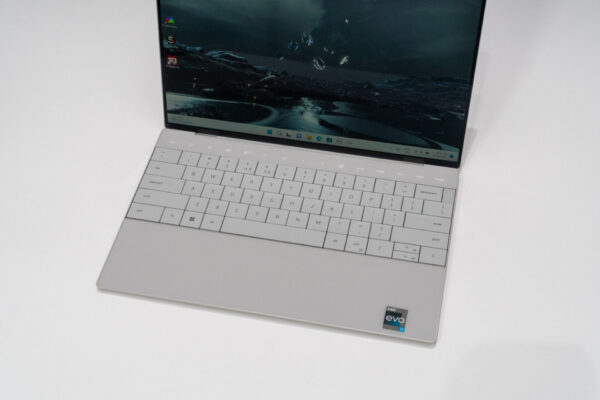
Oh yes, two things will immediate strike you. WTH happened to the function keys?! Where is the trackpad?
So these are the two features that could be quite polarising. First up, let me talk about the function keys. They are capacitive buttons. You can’t physically click down on them. You just touch them. They are fixed too, so not at all like Apple’s Touch Bar. The keys can switch between the Fn-number keys, or the special function keys (e.g. volume, brightness, etc), with the appropriate icons backlit from within.
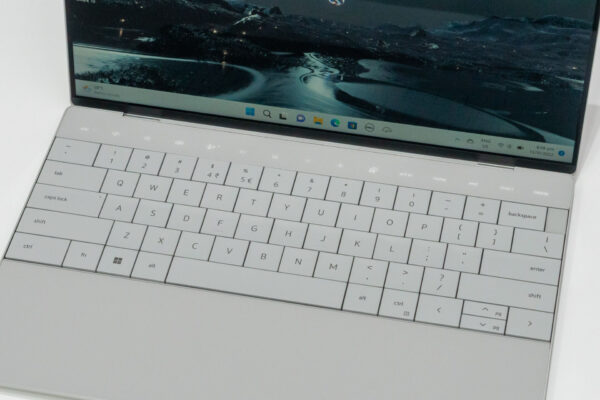
I know, some people will find these function keys nice. Others will think they are okay. For me? I’m thinking, did Dell not get the memo that Apple’s Touch Bar did not pan out?
That’s right, I don’t like these keys. This is a Windows laptop. Windows require frequent use of function keys. Now, this was arguably tolerable on a Mac because macOS doesn’t use the function keys much.
Even if I reluctantly accept these capacitive function keys, I cannot work with a capacitive Escape key. As a techie, sysadmin, programmer, devops, kind of person, I absolutely need a proper Escape key. Maybe, for other kind of users, this keyboard might work. For people who don’t really use the Escape key, sure, this capacitive function key row might be tolerable, maybe even interesting and nice.
It is a shame, because the XPS 13 Plus’ keyboard is otherwise really fantastic. They are really nice to type on, among the best of keyboards I’ve used on ultralight laptops. The squarish keys are backlit and sport decent travel for a laptop this thin. The finish on the key caps are nice to touch too.
I would have preferred more space between the keys, and proper inverted-T navigation arrows. But I get it, the design that Dell has gone for, physical keys and capacitive keys all blending together, produces an almost seamless keyboard deck that is visually stunning.
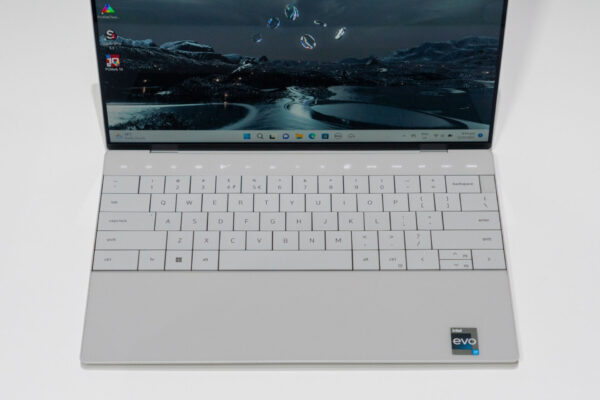
That, also because the trackpad appears to have gone missing. No, Dell hasn’t gone insane. The trackpad is there, just invisible, because it has been seamlessly integrated right into the keyboard deck. If you are not sure if that’s going to be a problem, I can answer that from my real-world use.
It turns out I don’t need to see where the trackpad is. It is there, logically placed right under the space bar. It’s actually quite large, approximately 5.2-inch across, stretching from the left edge of the space bar, to the end of the Alt key on the right. The top and bottom basically reaches the end of the palm rest. So, just use the trackpad as you normally use. The trackpad is big enough, just know it is there, and don’t think too much about the lack of any visual que about where its boundaries are.
I think the Dell XPS 13 Plus’ trackpad is a big design win. The entire keyboard deck (i.e. including the capacitive keys area) is a glass surface with a soft-touch matt finish that feels really good to touch. This is accentuated as you glide your fingers over the trackpad to use it. It’s really cool, maybe even magical.
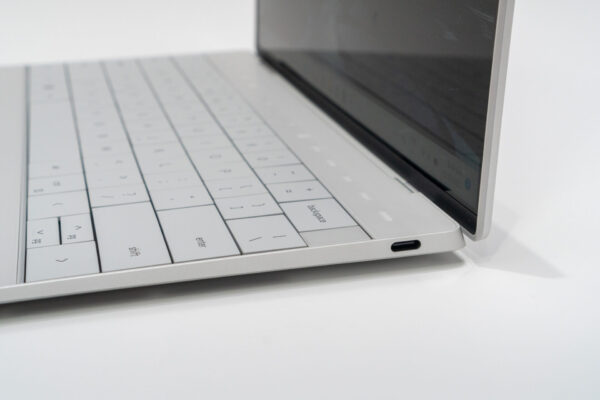
Topping off the list of features on the keyboard deck, we have the power button and integrated fingerprint reader. It’s in the top right corner, in a nondescript glass piece next to the backspace key. The fingerprint reader works well, and it is one of the two supported Windows Hello login methods on the XPS 13 Plus.
Other aspects of the XPS 13 Plus are perhaps more routine. Don’t get me wrong. They are great, but they are already familiar features in earlier XPS 13 models.
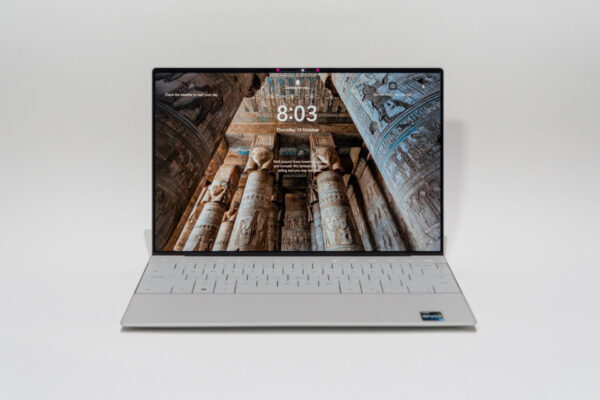
First up is the display. This review unit has a 13.4-inch 4K touch-enabled panel with 16:10 aspect ratio that reaches up to 500 nits of brightness. My Spyder5PRO tests found 99%, 71%, 76%, and 80% sRGB, NTSC, Adobe RGB, and P3 colour gamut coverage respectively.
This is a really nice display. The thin bezels around the display, which Dell calls Infinity Edge, makes the screen look very beautiful. The display is bright and its colours and vibrant. The glossy finish is treated with an anti-reflective coating, so the display is reasonably useable even in outdoor settings.
The 720p webcam sits atop the display. Centered. Gone are the days when Dell tried to be creative with the camera position. This webcam has IR, and it is the second Windows Hello login method supported by the XPS 13 Plus.
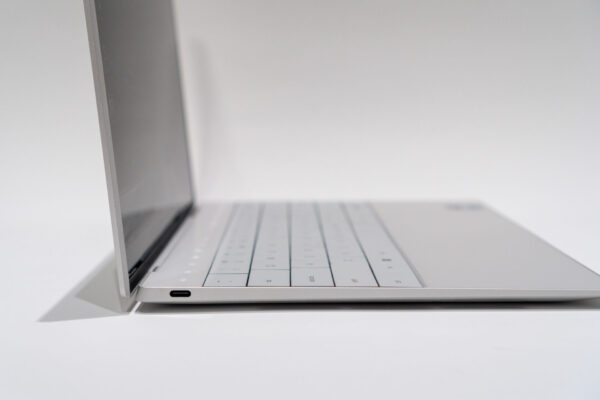
The XPS 13 Plus is light on ports. It’s not unexpected. There’s just two Thunderbolt 4 ports with DisplayPort and Power Delivery, one on either side of the laptop. That’s good, so you can choose which side to connect your multiport adapter that you’re most likely going to need.
Dell does include a USB-C to USB-A 3.0 adapter in the box, along with a USB-C to 3.5 mm headset adapter.
Under the hood, my XPS 13 Plus review unit is powered by 12th Generation Intel Core i7-1260P, 32 GB of LPDDR5 5200 MHz memory, 2 TB of M.2 Gen 4 PCIe NVMe storage.
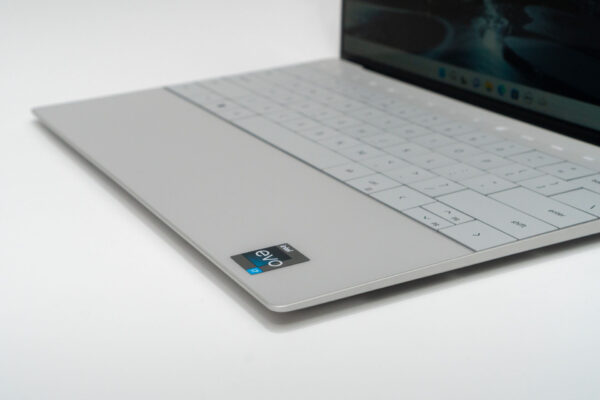
The choice of the P-series processor means that the XPS 13 Plus isn’t really powered like other ultrathin laptops that typically use a U-series processor. The i7-1260P is a 28 W processor with 4 performance cores (8 threads) and 8 efficiency cores (8 threads). This translates to better performance for slightly heavier workloads.
In PCMark 10 Extended, the XPS 13 Plus cores:
- Overall: 4641
- Essentials: 9066
- Productivity: 6483
- Digital Content Creation: 5460
- Gaming: 3906
Geekbench 5 scores are:
- Single/multi-core: 1482 / 7914
- Compute: 19718
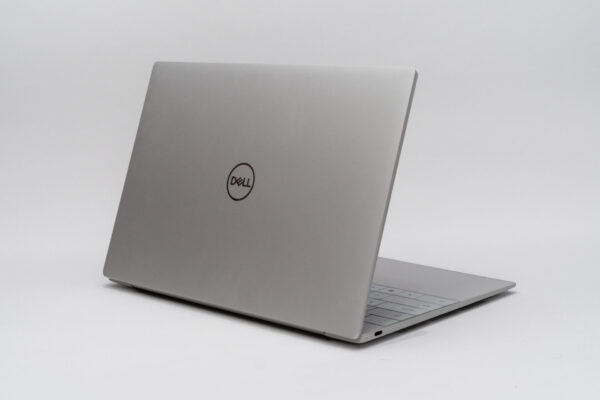
The Dell XPS 13 Plus has a 55 Whr battery. I did not manage to get PCMark 10’s battery tests to run on this laptop, so I am unable to provide objective scores from there. In my own usage, I found the battery runtime decent, and nothing particularly impressive. This seems to gel with other reviews I’ve seen on the Internet. This 4K model I have runs about 7 – 8 hours. Using a P-series processor and 4K resolution certainly eats up battery.
Dell rates the Full HD non-touch model for up to 13 hours of runtime. If battery life is important, you might want to consider the Full HD model. On a smallish 13.4-inch display, I feel Full HD has quite enough pixels.
The Dell XPS 13 Plus as configured in my review (i7-1260P, 4K non-OLED, touch, 32 GB RAM and 2 TB storage) retails at $4199. It is also available at more affordable prices starting from $2299, which gets a very decent i7-1260P, 16 GB RAM, 512 GB storage, and 1920×1200 non-touch display.There are also other in-between options, so you have flexibility to pick what suits you best.
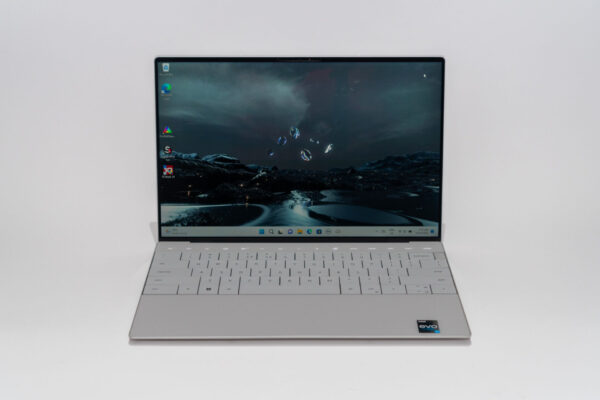
Conclusion
The Dell XPS 13 Plus makes some radical changes the XPS 13 which has only had smaller evolutionary changes in recent years. Some of these will resonate well. I love the completely seamless integration of the trackpad that totally disappears into the palm rest. The capacitive function keys are cool, though some users like me would prefer physical keys.
Pros:
- Ultralight ultra-compact laptop
- Great performance
- Great display
- Really cool invisible trackpad
- Really good keyboard
Cons:
- Not everyone will fancy the capacitive function keys
- Average battery runtime
1 thought on “Dell XPS 13 Plus”
View Comment Policy